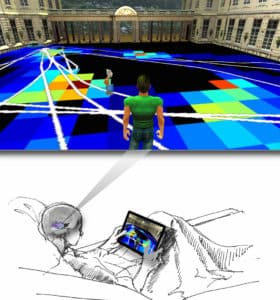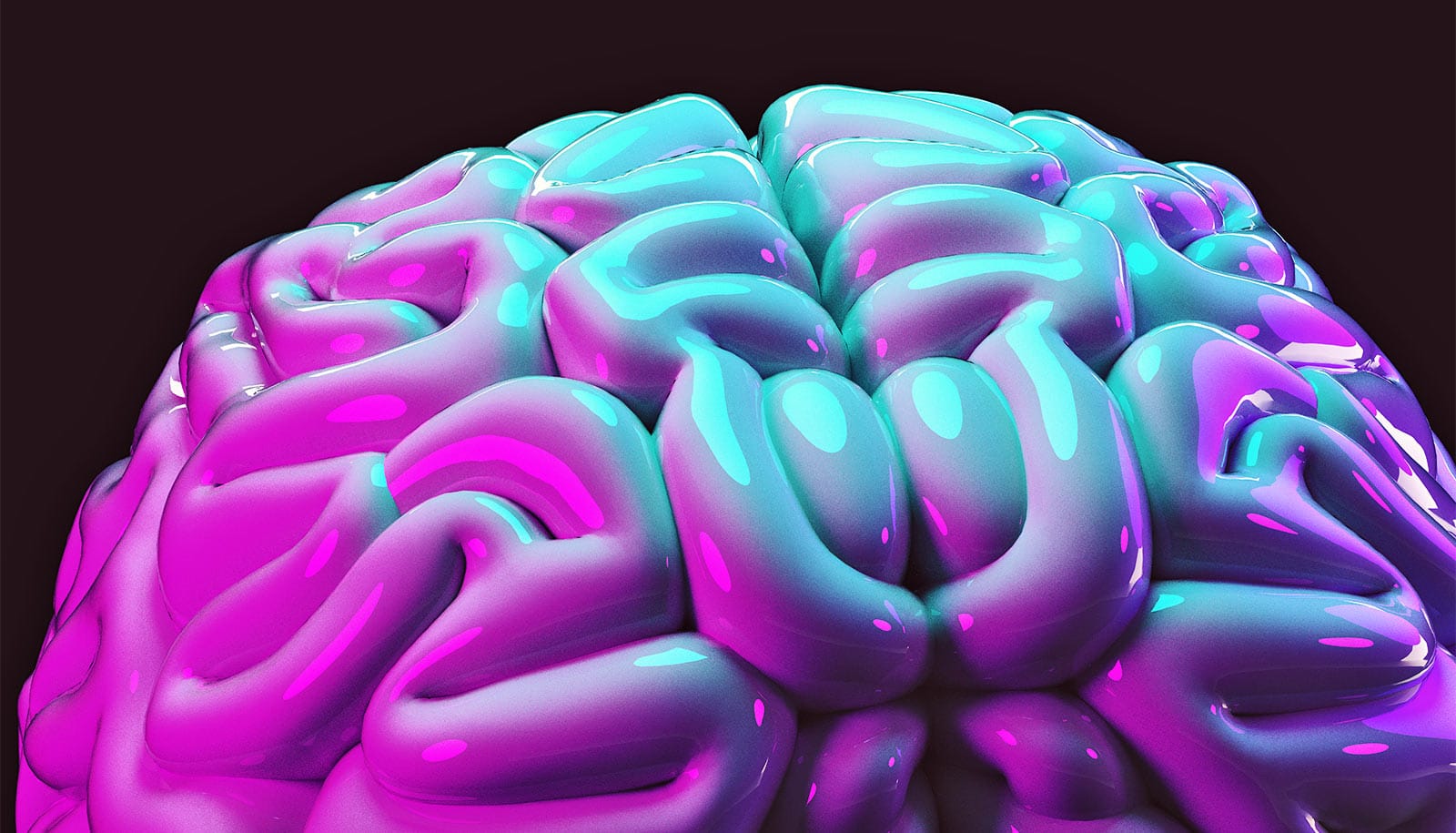Whereas humans can look at a complex landscape like a mountain vista and almost immediately orient themselves to navigate its multiple regions over long distances, other mammals such as rodents orient relative to physical cues—like approaching and sniffing a wall—that build up over time.
This ability to navigate our surroundings and understand our relative position includes an environment-dependent scaling mechanism, according to a new study.
“Our research, based on human data, redefines the fundamental properties of the internal coordinate system,” says Zoltan Nadasdy, lead author of the study and an adjunct assistant professor in the University of Texas at Austin’s psychology department. Nadasdy is also a researcher at Eötvös Loránd University and the Sarah Cannon Research Institute at St. David’s Medical Center.
“Dysfunction in this system causes memory problems and disorientation, such as we see in Alzheimer’s disease and age-related decline. So, it’s vital that we continue to further our understanding of this part of the brain,” he says.
Electrodes and virtual reality
Through a partnership with Seton Healthcare Family, the researchers in the UT Austin Human Brain Stimulation and Electrophysiology Lab were able to measure relevant brain activity of epileptic patients whose diagnostic procedure requires that they have electrodes planted in the entorhinal cortex of the brain. Neurons there serve as the internal coordinate system for humans. (The brains of individuals with epilepsy function normally when not undergoing a seizure.)

Patients performed a virtual navigation task on a tablet computer in four environments daily for seven to eight consecutive days. By measuring their brain activity, the researchers identified three previously unknown traits of the system:
- Humans rescale their internal coordinate system according to the size of each new environment. This flexibility differs from rodents’ rigid map that has a constant grid scale and empowers humans to navigate diverse places.
- When seeking navigational cues in any given location, humans automatically align their internal compass with the corners and shape of the space. In contrast, rodents do so relative to the walls of the environment through physical exploration.
- The nature of the coordinate system differs between humans and rodents—Cartesian and hexagonal respectively.
The findings illuminate the fabric of the human memory and spatial navigation, which are vulnerable to disease and deterioration. Deeper knowledge of these neuronal mechanisms can inform the development of techniques to prolong the health of this part of the brain and combat diseases such as Alzheimer’s.
Are animal models still accurate?
The study, published in the Proceedings of the National Academy of Sciences, builds on earlier Nobel Prize-winning research exploring the entorhinal cortex of rodents. Due to the differences discovered between the human and rodent systems of navigation, the researchers emphasize that generalizing results from studies on animal subjects may provide inaccurate conjectures.
Brain’s navigation system isn’t really like GPS
“Now, we can continue to explore this key component of what it means to be human—how we think about our past and future, how we imagine and plan.”
This study is one of the few on human subjects that report on the activity of individual neuron behavior, says György Buzsáki, an expert from New York University Medical Center who was not involved in the research.
“They not only confirm a previous report but extend the findings by showing that the size of the neuronal representation by entorhinal grid cells scales with the environment,” Buzsáki says.
“Our hypothesis is challenging the definition of a universal spatial scale of environment predominant in lower mammals, which may open up important avenues of discovery,” says Robert Buchanan, another lead author of the study and an associate professor at Dell Medical School. He is also an adjunct associate professor in the university’s psychology department and a chief of neurosurgery at Seton Brain and Spine Institute.
“Now, we can continue to explore this key component of what it means to be human—how we think about our past and future, how we imagine and plan,” Buchanan says.
By using virtual reality, the researchers also refined a new experimental technology for facilitating spatial experiences that can’t be reproduced in a laboratory. The data implies that humans can seamlessly switch between reality and virtual reality—a finding that can be applied in other studies of the brain.
Additional coauthors are from Baylor College of Medicine; Eötvös Loránd University and Hungarian Academy of Sciences; and UT Austin’s Dell Medical School and Seton Brain and Spine Institute.
The Brain and Behavior Research Foundation and the Seton Seed Grant for Research supported the work.
Source: University of Texas at Austin



